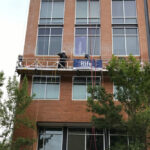Oral surgery can correct a variety of mouth and facial issues. Some examples are removing impacted wisdom teeth, repairing a cleft lip or palate, and dental implants.
As a patient, you should prepare for the procedure by stocking up on foods and drinks that are safe to consume during recovery. It would help if you also planned to have someone drive you home after treatment.
Contents
Tooth Extraction
A person may require a tooth extraction due to severe decay, periodontal disease or if the root is damaged beyond repair. The procedure can improve a patient’s oral health, restore their smile and reduce the risk of complications like shifting teeth and jaw problems.
A dentist or oral surgeon near Buffalo, NY will numb the tooth, bone and gum tissue with a local anesthetic. They will also offer sedation or general anesthesia if requested by the patient.
Then they will loosen the tooth with an elevator tool and remove it with forceps. They will irrigate the wound with saline and remove any sharp bone fragments. After the procedure, a person should use pain medication as directed and rinse their mouth often with warm water.
Dental Implants
Dental implants are an alternative to removable dentures or bridges and can replace missing teeth. The Niagara dental implant & oral surgery also help preserve jaw bone and reduce bone resorption.
An oral surgeon creates a flap of gum tissue to place dental implants and expose the bone underneath.. They then drill and enlarge the site. They may use self-dissolving stitches to close the incisions.
A patient’s overall health is a major factor in dental implant success. Conditions like diabetes, heart disease, long-term steroid use, and cancer can slow healing and make it harder for an implant to integrate into the jaw bone.
Bone Grafting
Bone grafting is a less well-known treatment often used alongside dental implant surgery. It reinforces weakened bone tissue in the jaw and helps counteract the natural resorption (shrinking) that happens when a tooth is removed.
Depending on the case, the grafting material may come from your own body (autogenous bone graft), a donor (allograft), a bovine animal (xenograft) or a synthetic material (alloplastic).
The most common type of graft is called a socket preservation graft. This is placed in the empty socket immediately after tooth extraction and prevents the sides of the socket from caving in.
Corrective Jaw Surgery
If your jaws aren’t growing properly, this can cause serious problems with speech, chewing and facial support. Your oral surgeon can correct unequal jaw growth using orthognathic surgery.
This involves moving the upper and lower jawbones to a more ideal position. During the procedure, bone may be added, removed or grafted to create an optimal jaw shape and alignment. Surgical plates, screws and wires are often used to hold the jawbones in new positions.
A multidisciplinary approach is often necessary to plan and perform this type of surgery, including input from oral and maxillofacial surgeons, orthodontists and conventional dentists. It is also common for patients to need a speech and language therapist to assist with their recovery.
Sleep Apnea Surgery
Obstructive sleep apnea can significantly reduce the quality of your life and lower your body’s oxygen levels. In severe cases, a physician may recommend surgery to address airway obstruction.
A surgeon may use a uvulopalatopharyngoplasty (UPPP) to remove tissue from the throat or soft palate. This can open the throat and reduce snoring.
Another option is maxillomandibular advancement, which moves the upper and lower jaw bones forward. In a small study, this procedure reduced obstructive sleep apnea severity in all participants. However, the success of this and other surgeries for obstructive sleep apnea varies with the individual patient.
Facial Trauma Surgery
The delicate balance of bones, muscles and other structures in the mouth and jaws helps us eat and speak so that any injury can be very serious. Whether it’s lacerations (cuts), facial fractures, or knocked-out teeth, our experienced oral surgeons can treat these injuries with a focus on restoring function while minimizing scarring.
Facial trauma injuries require specialized training, and our oral surgeons are highly trained in emergency care, acute treatment, long-term reconstruction, and rehabilitation. They’re also on staff at local hospitals to treat patients with facial injuries in a hospital setting.
Reconstructive Surgery
While general dentists keep you in good oral health through regular exams and restorations, your doctor may refer you to an oral surgeon if you have an issue requiring more advanced treatment. These specialists perform complex procedures, such as wisdom tooth removal, dental implant placement, bone grafting and corrective jaw surgery.
In addition, oral and maxillofacial surgeons can reconstruct your mouth and jaw if you suffer a facial injury or disease. They can repair fractures and treat soft tissue injuries such as lacerations or burns. They can also reconstruct your ear using techniques like otoplasty for protruding ears or autogenous ear reconstruction for microtia (small, underdeveloped ears).




